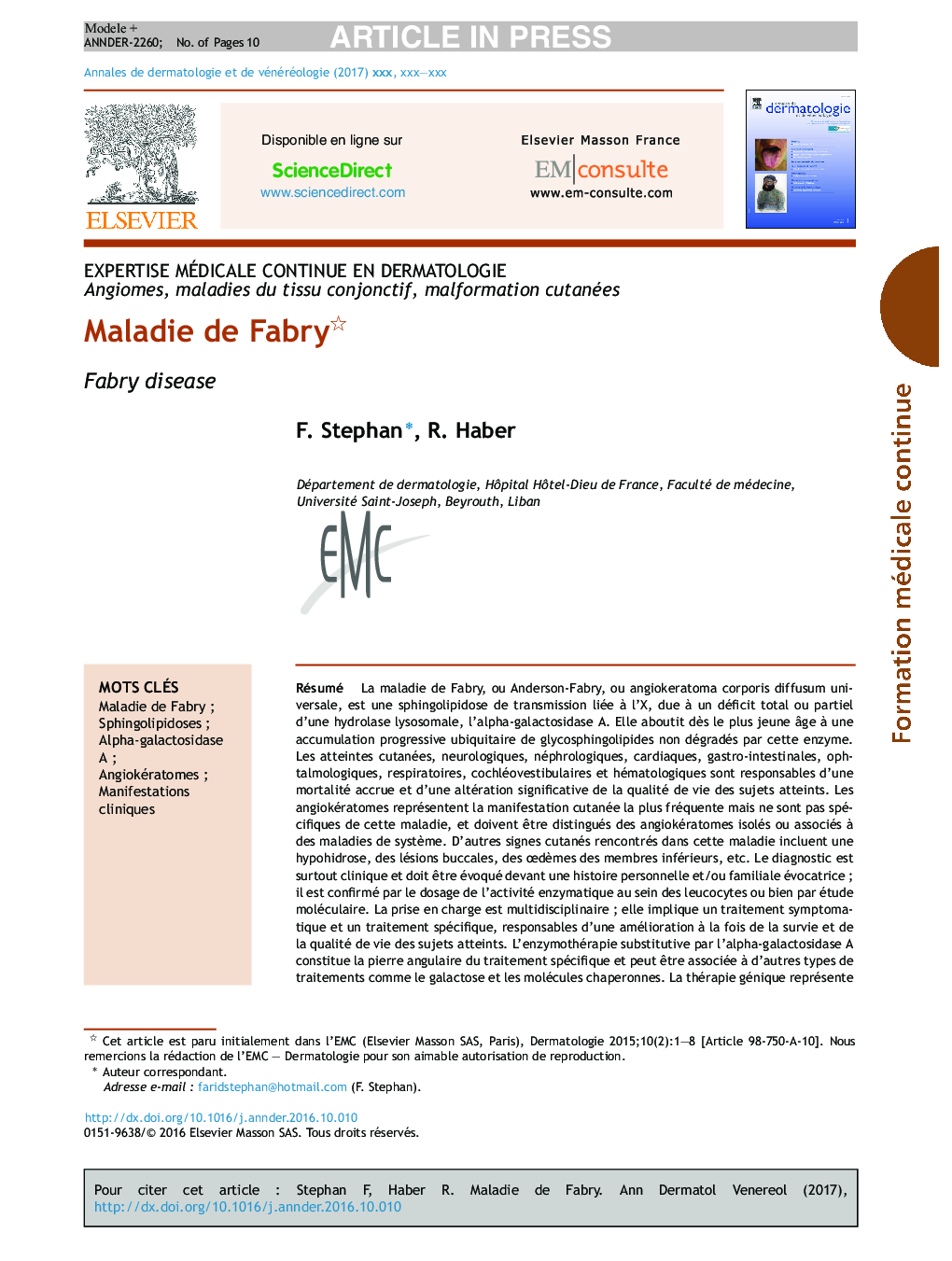| کد مقاله | کد نشریه | سال انتشار | مقاله انگلیسی | نسخه تمام متن |
|---|---|---|---|---|
| 5644687 | 1407000 | 2017 | 10 صفحه PDF | دانلود رایگان |
عنوان انگلیسی مقاله ISI
Maladie de Fabry
ترجمه فارسی عنوان
بیماری فابی
دانلود مقاله + سفارش ترجمه
دانلود مقاله ISI انگلیسی
رایگان برای ایرانیان
کلمات کلیدی
موضوعات مرتبط
علوم پزشکی و سلامت
پزشکی و دندانپزشکی
امراض پوستی
چکیده انگلیسی
Fabry disease, also known as Anderson-Fabry disease or angiokeratoma corporis diffusum universale, is an X-linked recessive form of sphingolipidosis caused by total or partial deficiency of the lysosomal hydrolase, alpha-galactosidase A. From the youngest age, it results in a gradual ubiquitous build-up of glycosphingolipids that are not degraded by the missing enzyme. Cutaneous, neurological, nephrologic, cardiac, gastrointestinal, ophthalmological, respiratory, cochleovestibular and haematological involvement are responsible for increased mortality and significant impairment of quality of life in subjects affected by the disease. Angiokeratomas are the most common cutaneous sign of this disease, although they are not specific to it and must be distinguished from angiokeratomas either occurring in isolation or associated with systemic diseases. Other cutaneous signs encountered in this disease include hyperhidrosis, oral lesions, lower limb oedemas, etc. The diagnosis is mainly clinical and should be considered in the presence of a personal and/or familial history; it is confirmed by assay of enzyme activity within leucocytes or by molecular studies. Management is multidisciplinary and involves symptomatic treatment as well as specific treatment, resulting in improved survival and enhanced quality of life for patients presenting the disease. Enzyme replacement therapy with alpha-galactosidase A forms the cornerstone of specific treatment and may be associated with other types of treatments such as galactose and molecular chaperones. Gene therapy is now also used extensively. At present, these marked therapeutic advances, which closely involve dermatologists, could help transform the prognosis for patients presenting Fabry disease.
ناشر
Database: Elsevier - ScienceDirect (ساینس دایرکت)
Journal: Annales de Dermatologie et de Vénéréologie - Volume 144, Issue 2, February 2017, Pages 137-146
Journal: Annales de Dermatologie et de Vénéréologie - Volume 144, Issue 2, February 2017, Pages 137-146
نویسندگان
F. Stephan, R. Haber,
